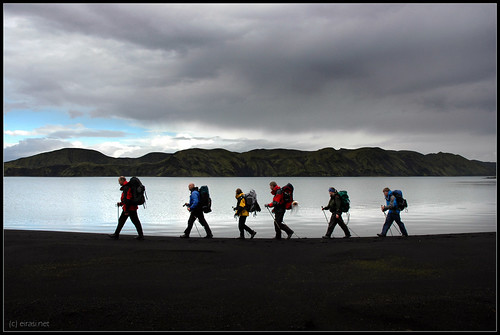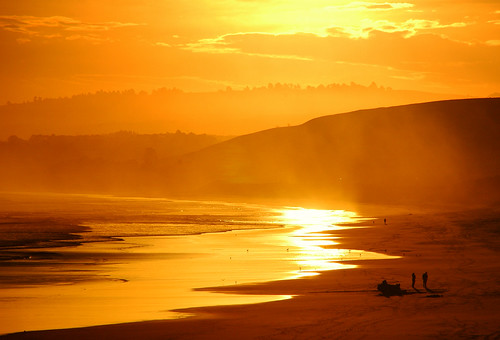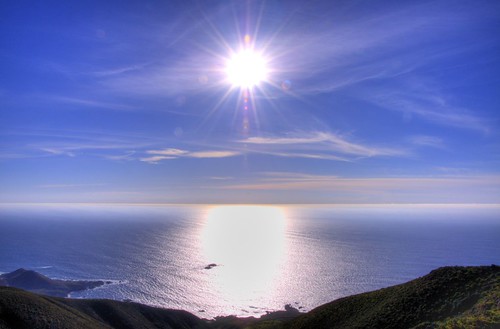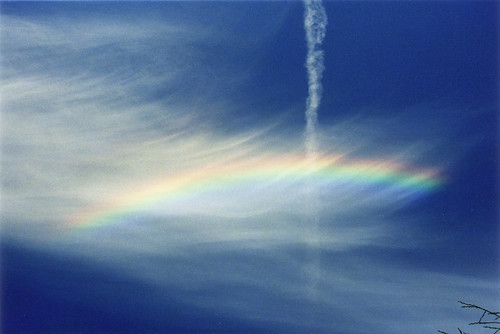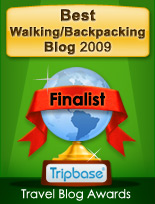Get teased by friends and family that you are obsessed with hiking?
Can't resist an outdoor goods sale just in case you find a new bit of gear?
Spend time at your day job dreaming of your next trip?
Don't understand why anyone would stay in a five star hotel when they could be sleeping in a tent or tarp?
Frank recently joined the forums at Trailspace.com and he stumbled across a thread titled:
You know when you are a backpacker when:
and it got him thinking that maybe HE is obsessed with the idea of the next hike or bushwalk. On continued examination he decided that being obsessed with such thoughts is a healthy pursuit and he was particularly reassured there are many others (particularly in this U.S. forum) who think the same way!
So in this post we summarise some of the great comments on the Trailspace.com forum and invite you to add your own answer to this question in the comments section below:
You know when you are a backpacker, multi-day hiker, bushwalker, tramper or treker (phew, one word to mean the same thing would be great) when:
1. During the winter, most of your internet browsing history contains new places to backpack, new gear, etc.
2. Your wife tells you to buy the bigger tent because if you don't stop ordering new gear we are going to have to live in it.
3. You pack your stuff in boxes to move, and there are more boxes labelled "gear" than there are labelled "kitchen"
4. You insist on taking the stairs at work and when you get to the top, you stop for a snack break
5. Your truck payment is late because there was a sale at REI/ Mountain Designs/ Paddy Pallin.
6. You close your eyes at night and still see a white blaze/ yellow triangle/ track sign.
7. You're always saying..."I just wanted to see if that way was quicker".
8. You have calluses on your shoulders. Picture by mbiskoping / CC BY-NC-ND 2.0
Picture by mbiskoping / CC BY-NC-ND 2.0
9. You tell the clerk at Goodwill / the Op Shop they should have a synthetic and wool section.
10. You cook spaghetti noodles and then dehydrate them. Same with beans.
11. When not out backpacking you waste time on internet forums talking about it.
12. You realize that you think the people who don't backpack are just a little....weird....
13. You randomly organise a carpool for the 6 hour drive to MEC / a track and back just because
14. There's an MSR pot gripper on top of your stove at home
15. There's a car under 5 feet of snow in the driveway because you unscrewed the licence plate to make a brake on your winter sled
16. All your socks are expedition weight merino wool
17. You use your 90L pack to carry the groceries
18. You sleep on a thermarest
19. Your keychain is a Swiss army knife/fox40/flint combo on a biner/ climbing loop
20. Your homepage is Trailspace.com/ Bushwalk Tasmania
21. You name your sleeping bags (yes you can come with me this time, Hayden McWeatherfordshiredam IV)
22. You wonder if the meal you are eating can be dehydrated effectively...
23. You are given the weird look when you try to explain to your co-workers how you ended up burning your hand when your homemade Pepsi stove exploded..
24. You see a hailstorm as a unique opportunity to test your tent.
25. You know you are a climber or backcountry skier, when it's -40, your friends say let's camp out, and you don't hesitate to grab your gear and head for the door.
26. When you visit relatives for the holidays, you camp in the backyard
27. You sleep in your sleeping bag because you just can't get comfy under bed covers
28. You never stay in motels when travelling, but stay in the woods/bush nearby
29. You cook on your camp stove at home, because that’s the only cook set you have
30. When you go hiking for the weekend, you don't want to go back to work on Monday
31. You learn edible plants to save weight in your pack.
32. You test your new sleeping bag in your room with the windows open, during winter...And maybe the fan blowing on you...
33. You never stow your gear, it always stays mostly packed, accessible & ready to go at a moments notice.
34. When you partake in a spirited debate about boots. ....and tents in hurricanes.
35. You ask questions no one can answer like: How do you get snail slime off a tent.
36. You hike all day just to cook over a beer can cause that is the real test of your stove making skills.
37. You check on your two packs at least once a week. You don't want them gaining weight when your not around...
38. You enjoy eating whatever the hell you want guilt free with a beautiful view and nobody to disturb you.
39. When your friends call or e-mail for recommendations for equipment (and you give them 5 equipment options for every question).
40. When you can outfit at least two of your friends completely so they can go on a trip with you.
 Photo by canadianveggie - he loves his backpack / CC BY-NC-ND 2.0
Photo by canadianveggie - he loves his backpack / CC BY-NC-ND 2.041. When you have to sneak new equipment past your spouse into the house.
42. When you've memorized, to the 1/10th of an ounce, the weight of all your equipment.
43. When you can recite the URLs of your favourite cottage gear manufacturers when you are asked for recommendations on the trail, as well as prices and a general summary of the user reviews from backpackgeartest.
44. When you can bring two extra stoves, two shelters, two extra pads and random rain ponchos to the trailhead/ start of the trip , because you know someone will forget something.
45. When your bear canister has more miles on it than your car.
46. You evaluate prospective spouses based on their gear holdings. Mine had an original North Face Oval Intention, dubbed "the Bim-Bam Room" (yes, we name our tents). Love at first sight...
47. You keep energy bars and bottled water in your car...just in case
48. You wear a rain jacket on a sunny day JUST IN CASE
49. You pass my the cooking section in Wal/K-Mart and double take cuz you could have SWORN you saw an MSR pot
50. You get excited when you have no dinner plans so you can use your cook set
51. You're the only one in 10 miles that's happy when the power goes out in winter
52. You ignore your boss's emails to click on *30% off sale at REI.com/ Mountain Designs*
53. You think about your next hike during you current one
54. Your dream job is testing gear.
55. Most of your recipes will work on or off the trail/track, and the approval process of new recipes includes trying it out on trail
56. When your back at home and you say to yourself....."I think there's half a snickers bar in my pack."
57. You can accurately guess the weight of "trimmable" stuff from a pack
Have we missed anything? Drop us a comment and add your ideas to the list, we would love to read them!
Trailspace.com is a great community for backpackers, hikers and anyone who loves the outdoors. Drop by, look around and join like Frank did. There are many like minded people there!
Related Posts
Larry, our resident gear junkie's list from The South Coast Track
5 features we don't want in a new backpack
Best one person tent? You decide
The Spirituality of Bushwalking - great post by Grant
Our Hiking Blog goes car camping - definitely NOT lightweight! Continue Reading ....





























